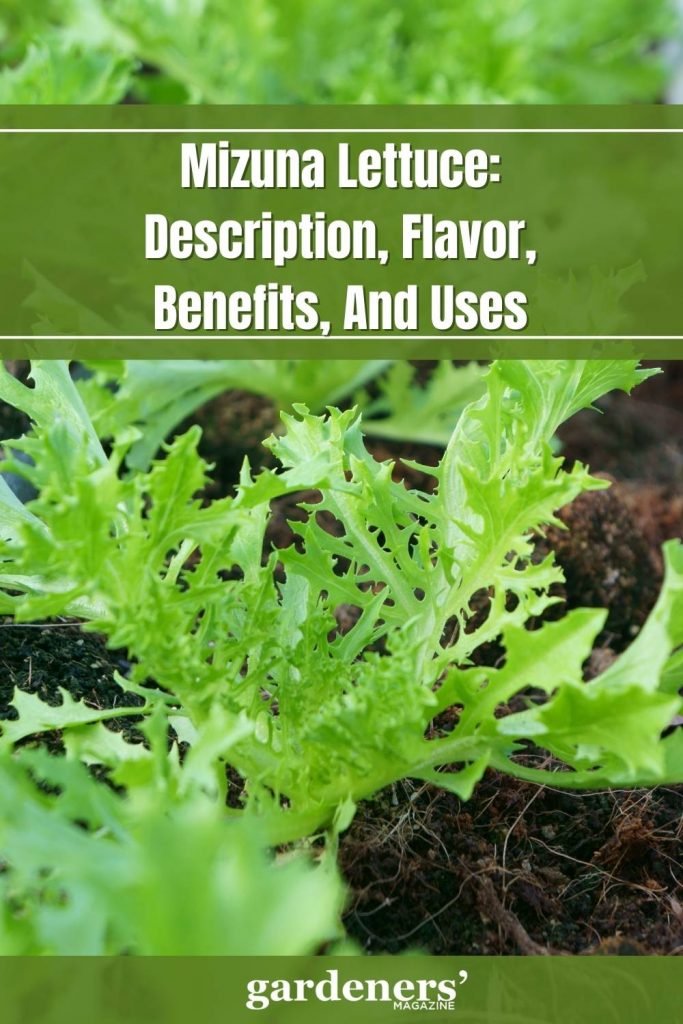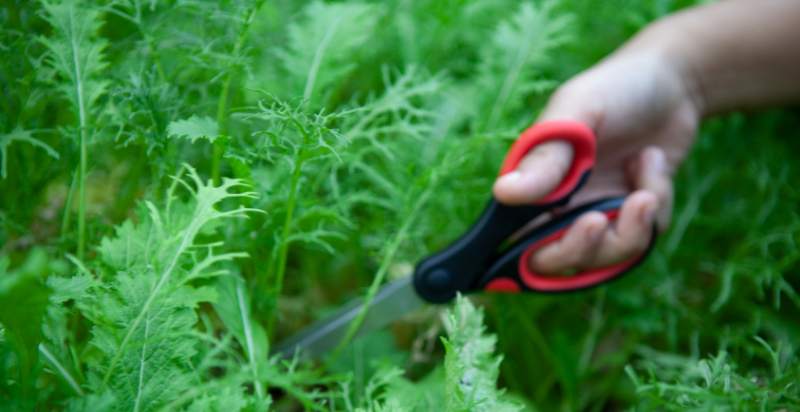Mizuna lettuce (Japanese mustard greens) is a Japanese green leafy vegetable from the Brassica family. It has been popular in Japan for centuries and is now gaining popularity worldwide due to its mild, slightly bitter flavor and crunchy texture. Mizuna lettuce can be eaten raw or cooked as a salad dish. Here is everything you need to know about this delicious vegetable.
What is Mizuna lettuce?
Mizuna lettuce (Japanese mustard greens) is a Japanese green leafy vegetable. It belongs to the Brassica family, which includes broccoli and kale and other vegetables such as cauliflower and Brussels sprouts. It has a mild, slightly bitter flavor and a crunchy texture. Its leaves are usually dark green, round, and slightly frilly.

History and Origin of Mizuna Lettuce:
Mizuna lettuce is a popular vegetable in Japan and is widely used in cuisine. It originates from Zhejiang Province, cultivated in the Yangtze Valley over 2000 years ago. Mizuna lettuce has been grown and consumed in Japan since at least the 16th century. Its popularity began to increase during the Edo period. The name mizuna is derived from the Japanese word “mizu”, which means water and na, which refers to the leafy greens.
The history of mizuna lettuce in Japan demonstrates the importance of preserving traditional culture by adapting to new trends and tastes. This ancient vegetable has become an essential part of modern cuisine, providing both health benefits and a tasty addition to many dishes.
Health Benefits of Mizuna Lettuce:
Mizuna lettuce is a powerhouse of health benefits. It is high in vitamins A, C, and K and is an excellent source of dietary fiber. Its antioxidants can help protect against inflammation and even some forms of cancer. It also contains phytonutrients that can boost the immune system, aid digestion, and improve cardiovascular health. Mizuna lettuce has a high concentration of minerals and other essential nutrients.
In addition, Mizuna lettuce contains a compound called glucomannan which can reduce the risk of diabetes and improve blood sugar control. The high content of vitamin C makes it great for skin health, as it can help protect against UV damage and encourage collagen production.
Where are Mizuna lettuce Grown and Harvested?
Mizuna lettuce is typically grown and harvested in Japan but can also be found in North America and Europe. The Japanese name for the vegetable is “Kyona”. It grows best in cool temperate climates and prefers full sun exposure. Mizuna lettuce grows quickly and can be harvested within two months of planting. The leaves are usually picked when they are young and tender.
Flavor Profile of the Mizuna Lettuce:
The Mizuna lettuce has a fresh, earthy flavor that is slightly spicy and pungent. It has a crunchy texture with a slight bitterness that goes well in salads and stir-fries. It also pairs nicely with other vegetables, such as carrots, beans, snap peas, onions, mushrooms and peppers. The leaves are tender when cooked but still retain some of their crunch. The flavor profile is similar to arugula and cabbage, making it a versatile ingredient in many dishes.
Where can the best Quality Mizuna lettuce vegetables be found?
Your local farmers’ market is the best place to find high-quality Mizuna lettuce (Japanese mustard greens) vegetables. Farmers’ markets typically have various locally grown produce harvested and sold on the same day. You can also find Mizuna lettuce at specialty grocery stores and Asian supermarkets. When shopping for Mizuna lettuce, look for vibrant green leaves with no signs of wilting or browning.
How do you store Mizuna lettuce (Japanese mustard greens) vegetables?
Mizuna lettuce (Japanese mustard greens) vegetables should be stored in a cool, dry place with plenty of ventilation. Keep the leaves unwashed until you are ready to use them, as moisture can cause spoilage. If you have purchased pre-washed Mizuna lettuce, make sure it is well-dried before storing it. It’s best to use Mizuna lettuce within two or three days of purchasing it, as the leaves can start to wilt and discolor over time. If you need to store your Mizuna longer than that, wrap it loosely in a damp paper towel and keep it in a sealed plastic bag in the refrigerator for up to seven days.
It is important to note that Mizuna should not be frozen, as it will become mushy when thawed. Instead, use it in cooked dishes or salads shortly after purchasing. If you have leftover Mizuna lettuce, blanch and freeze it for up to three months. Blanching helps maintain the bright green color of the leaves and prevents discolouration.
To blanch Mizuna, bring a pot of water to a rolling boil, add the leaves, cook them for two minutes, and then transfer them to an ice bath until cool. Drain the leaves and store them in sealed freezer bags. Thaw the Mizuna lettuce in cold water or heat it with oil or butter in a skillet.
How to use Mizuna lettuce (Japanese mustard greens) in recipes?
If you’re looking for more substantial recipes, mizuna lettuce pairs well with pork, chicken, and seafood. It can also be added to noodles or used as a wrap for summer rolls. Its crunchy texture is especially enjoyable when fried in tempura batter and served alongside dipping sauces. The possibilities are almost endless! Experiment with different flavor combinations to find the perfect way to enjoy this delicious and nutritious vegetable.

Conclusion:
Mizuna lettuce (Japanese mustard greens) is a mild but flavorful green that adds a fresh, earthy flavor and crunch to salads, stir-fries, soups and dishes. It is best to buy lettuce fresh from a farmer’s market or specialty grocery store and store it in a cool, dry place.
Mizuna lettuce should be used within two or three days of purchase, although it can be blanched and frozen for up to three months. Its crunchy texture and mild flavor make it a great addition to salads, stir-fries, summer rolls, and tempura dishes. With its versatility and nutritional value, Mizuna lettuce is a great way to add flavor and nutrition to any meal.
- Everything You Wanted to Know About Red Tamarillos - June 2, 2025
- A Guide to Tulips: Everything You Need to Know & More… - June 2, 2025
- Guanabana: Description, Flavor, Benefits, And Uses - May 27, 2025

10 thoughts on “Mizuna Lettuce (Japanese Mustard Greens): Description, Flavor, Benefits, And Uses”
Comments are closed.